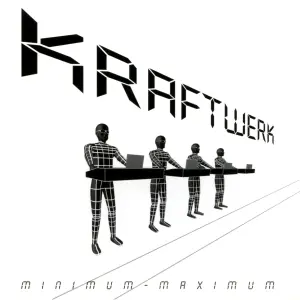First, thanks for reading and commenting.
I would appreciate any\all feedback from all of you, if there are recommendations for a stable, consistent setup - both hardware and OS. Or comments that I am asking for something unrealistic. Either a desktop or a laptop connected to a docking station.
a. I would like to suspend the machine at night and continue working in the morning.
b. To be able to support three monitors.
c. VM app to test stuff - virt network to test varied apps\code on different clients and servers.
d. Libre Office to create docs and presentations.
e. LTS.
Currently using a System 76 laptop w\ Pop OS and a docking station. The first laptop was warrantied to poor construction (keyboard and bezel weren’t flush, they separated and you could see the motherboard…) and now the second one is having the same issue - let alone sporadically working with suspend or the docking station (will have to reconnect the docking station, most times rebooting).
I’ve distro hopped for years, so I would consider myself a beginner\intermediate user. I am more than willing to pay\donate for consistency, and right now that leans towards MS and Windows (sigh).
What are corporate users using? I think that is my standard, as I’ve worked at places that were primarily windows shops, And it is pretty easy to come in in the morning and resume from yesterday. “RH for workstations” ?
Thank you!!
Fedora Atomic for the win, it’s been my one and only ever since I first used it.
I love it. Fedora atomic is amazing.
What are corporate users using?
Corporates are using ThinkPads, HP EliteBooks and MacBooks. OS being Windows, macOS mainly. Linux on workstations is pretty rare - mainly used by developers - and the distro being Ububtu LTS (which I do not recommend).
Since you want to use Linux, go for a ThinkPad. There are more Linux-friendly laptops of course (like Framework and System76) but I believe none of them offer corporate-levels of stability and build-quality like ThinkPads yet - as you have experienced yourself with System76.
Main pro-tip is to avoid systems that use nVidia cards - they’re often responsible for buggy suspend/resume in Linux, and can break your OS sometimes when you do an OS/kernel upgrade. So if you’re after stability, avoid nVidia like the plague.
For the docking station, I’ve had good experiences with the HP Thunderbolt Dock G4. The initial releases were in fact a bit buggy with suspend/resume, but HP have released subsequent firmware updates to fix those issues. In fact, HP have been really good at providing regular firmware updates for those docks, and the best part is that it’s on the LVFS too - which means the firmware can be updated directly in Linux using
fwupd. A lot of vendors don’t bother updating docking stations - and even fewer update them via LVFS, so this is something you might definitely want to look into.Finally, for distro recommendations, I would recommend a Fedora Atomic distro since they’re immutable, and rollbacks are as easy as just selecting the previous image in the boot menu. Given your requirements, I’d recommed Bluefin - specifically the Developer Experience version, since it comes with virtualisation tools OOTB.
For reference, I mainly use Bazzite (another variant of Fedora Atomic) on my pure-AMD ThinkPad Z13, and haven’t had any issues with suspend/resume, external monitors, or virtualisation dev/test workflows. There’s virtually no overnight battery drain either when suspending. My system also supports Opal2, so my drive is encrypted transparently to the OS, with virtually no performance overhead. It’s also nice not having to muck around with LUKS and the complexities around it. I use this system for both work and personal use (gaming), and it’s been a great experience so far - both software and hardware. Happy to answer any questions you may have.
Super appreciate the reply, d3Xt3r!
I’ve been screwed by nVidia cards before. I knew that but still bought the System 76 laptop… I have some decent laptops from previous jobs, I have a pretty beefy ThinkPad P52 that I will spin up Bluefin once I get a little freetime.
Thanks for the in depth response.
+1 for Debian, if you just want a stable, reliable system and don’t care about the latest and greatest features there is no better choice
Debian and Fedora, Debian and Fedora. That is a lot of the recommendations I’ve gotten.
Debian Stable, in my experience, can stay online for months, even over a year, with very little attention, and still work as well as you left it. You can also install RHEL or a rebuild, like AlmaLinux, RockyLinux, or Oracle Linux, as a workstation distro.
As for the device, my use case is fairly different so I’m not sure what to suggest. Maybe an Intel NUC, or a Framework laptop.
ooo, I went to the Framework website. When I get a some ‘disposable’ cash, I will get a framework lappy.
Second the NUC suggestion. I’ve got a 10th gen i7 model that I use primarily as a media server. It draws <6W at idle so it runs 24/7 and barely makes a blip on my electricity bill. It’s been rebooted exactly twice so far this year after switching from Windows 10 to Arch (BTW), once after a planned upgrade and a second time unexpectedly when my cheap UPS’s battery died. It works fine with the two docking stations I’ve tried and two different USB-C displays. I think my model might need a small adapter to support a third monitor but I’m not sure that’s the case with newer generations, though you may have to look beyond the Intel-branded hardware if you do want a more recent edition since they sold the brand to ASUS.
For the OS: Debian
Hardware: a modern thinkpad
I’d recommend a framework laptop over a modern thinkpad
Having had both, I can say that with the framework you get a much better display, but you lose the trackpoint. The framework has better repairability, but has less IO. The hardware on the framework is well supported on Linux, but can be hit or miss on thinkpads, especially newer ones.
The only thing I’m really missing on the framework is the black thinkpad chassis - can’t really get used to the aluminum.
What are corporate users using?
Windows on PCs, Linux is used mostly only on servers (RedHat/SuSe), hardware brands are usually HP, Dell and Lenovo.
I think that is my standard
Why? Do you expect companies to ask you to use your own PC for work instead of providing the tools you need? Be wary of those who do, using whatever personal PC for company work can lead to data breaches and that’s a very serious problem.
Sorry, I should have elaborated when asking about ‘corporate users’. I was thinking what does Red Hat or Ubuntu or System 76 employees use? and I thought that was a ‘standard’ that I just didn’t know about that I would adopt.
As for companies asking to use your own pc - I’ve run into it a couple of times now since working from home/remote, that companies will ask you to sign in to some cloud apps to start onboarding before they send you hardware. Also, contracting / small gigs on the side!
Uhhh, RHEL, Ubuntu and Pop!_OS, respectively?
Another vote for Fedora. I’m a docker user so I find regular ol Fedora Workstation 40 to be a damn near perfect Linux distribution
Seems to be the consensus - Fedora with Docker.
I’d say that if you want a stable, “just works” experience, try fedora. It’s the only distro I’ve had truly 0 issues or complications with…
I’ve always liked Fedora. I think I messed up in the past by trying to ‘tinker’ with different WMs instead of just doing my work. My next install will mostly be Fedora.
I don’t think it applies here, but I’d like to tell you my perspective in case you find it interesting anyway.
I am a developer and I often need relatively new versions of everything dev related.
Contrary to popular belief - I had the best experience in regards to stability with archlinux. I have it installed both on a PC (when I need to do some Blender or heavy Photoshop work) and on a thin and light Laptop (for a flexible work space and stuff on the go) - and I use both about 50/50 of the time.
To be fair, I am knoledgable in the Linux user libs/apps space and it took a lot of knowledge to set everything up in a reliable way just the way I want and need it. I’d say arch is extremely customizabe and there exists a narrow path where you can make it pretty reliable, but there are also many sidepaths which can be unreliable and break often.
After setting it up though, my maintenance times for archlinux were significantly lower than each of the following
- Windows (Going to ~30 different websites weekly to check for new releases and manually downloading and installing them)
- Mac (homebrew constantly breaking dependencies)
- Debian/Ubuntu (which I was upgrading to the newest release every 6 months and it was a PAIN)
But also take this with a grain of salt, because my so. also has a pretty similar arch linux setup on similar hardware and they have more issues than I do and we don’t really know why :D
Thank you for the reply. Many moons ago I tried to spin up a Arch lappy, but failed. I haven’t tried since (complaints about no free time and such), but I kinda took that fail that I always wanted to go back and try again!
There is
archinstallnow, which is pretty easy to use and usually just works. I recently used it again and it took me about an hour from start to fully installed, running arch with all the packages I need.If you try again, make sure to use btrfs filesystem and set up snapper and bootable snapshots. That way you can always recover from a fuckup in a minute.
I think CentOS Stream, Debian or a tweaked Ubuntu LTS are good for stability and all free also as in freedom (after replacing snap with flatpak on Ubuntu).
OpenSUSE slowroll is a good model for better tested but not randomly held back packages.
Fedora has the older stable release, currently 39. It is more stable than the current 40.
As a workstation Desktop I can recommend KDE Plasma, but it is not bugfree. Plasma 5 has bugs that will not be fixed, Plasma 6 has those fixed but random other bugs and random missing features.
GNOME is unusable in many parts for me personally, but very very likely the most stable but also modern Desktop.
COSMIC will be pretty awesome. It doesnt really have bugs for me, but simply a ton of missing things. But the way they build the project, how well everything works and implements all sorts of “we have this new shiny thing” from various DEs like KDE Plasma, is really nice.
But that will take at least a year to be really finished.
Linux Mint Debian Edition would be a pretty solid, pre-customized distribution.
I’ve had great experiences with Linux on Lenovo over the years: would be my first recommendation.
I currently use a Dell Inspiron, while it’s works great, I had to do some extra work occasionally. I love that I can get fingerprint login with it on Linux though.
I have a fondness for Mint. I was able to build a desktop and a laptop with Mint for my parents. They’ve been using them for years now, at least over 5. It just works for them.
If you wanna try rhel they let you install to a handful of machines for free.
I was mostly using Fedora desktop with CentOS servers many years ago. Though, will soon spin up Fedora again.
Rocky and AlmaLinux also both let you install them for free to infinite machines
nixos is great - as long as the software you need is in nixpkgs, and it usually is. reinstallation is almost never necessary. You can switch your system to the unstable channel, and if you get tired of that, back to stable again, no problem. Experiment with software and remove it without a trace left in your system. If you mess up your config, you can roll back to the previous config in the bootup menu. Your system config is in a text file which you can put into source control if you wish, which allows you to replicate your config onto another machine, or revert to what you had 6 months ago, etc.
Thank you for the rec. I will have to try nix when i get some time.
For hardware stability you should check out:
Search for the Distro or Laptop you want and chrck the user reports for the other factors. I noticed that some Laptops work better with some distros than others so lock the factor that is more important to you.
For distro stability, something others have not mentioned:
Zorin OS has a pay once option where allegedly everything just works. Maybe thats interesting to consider as an option.
I love Fedora Sircea, however NixOS seems like a better solution (albeit with a larger learning-curve.)
EDIT: Just looked it up, I guess it was renamed “Sway Atomic”, and iirc they’ve also released a Budgie Atomic version with Fedora 40!
Yeah, Atomic is looking to be my next spin with a thinkpad lappy i have.










